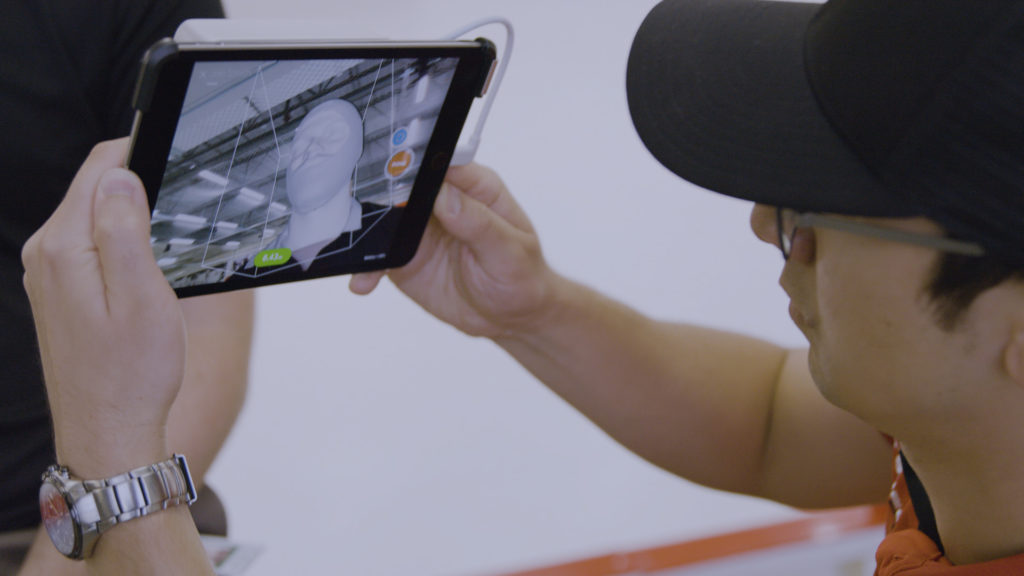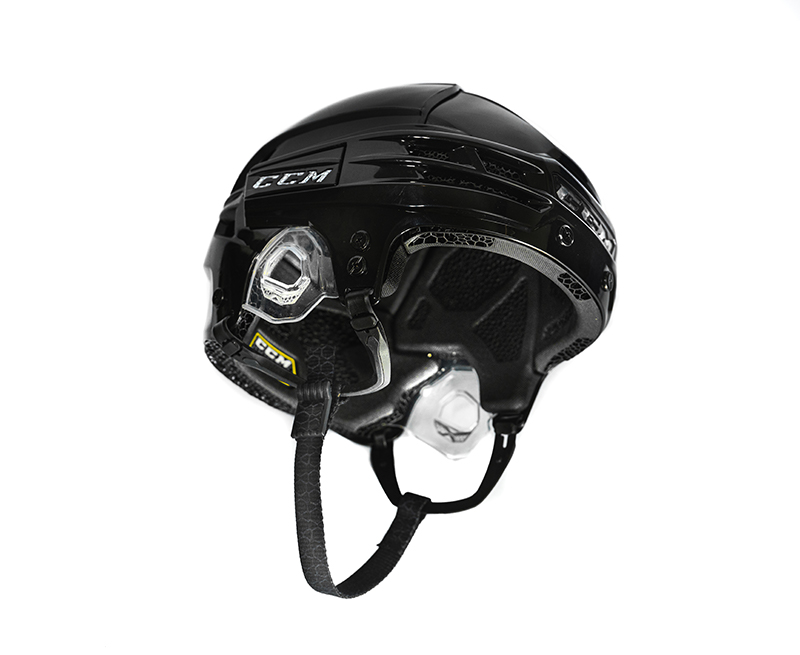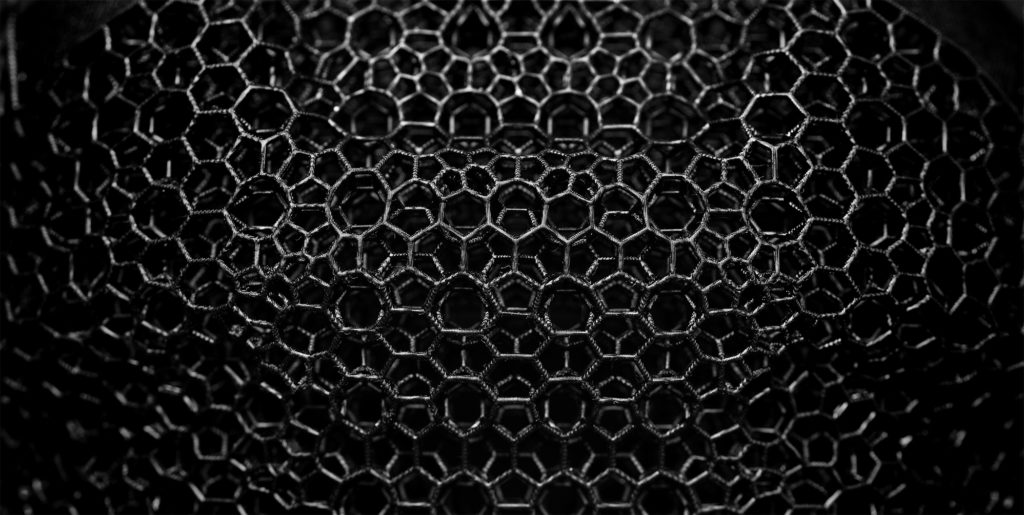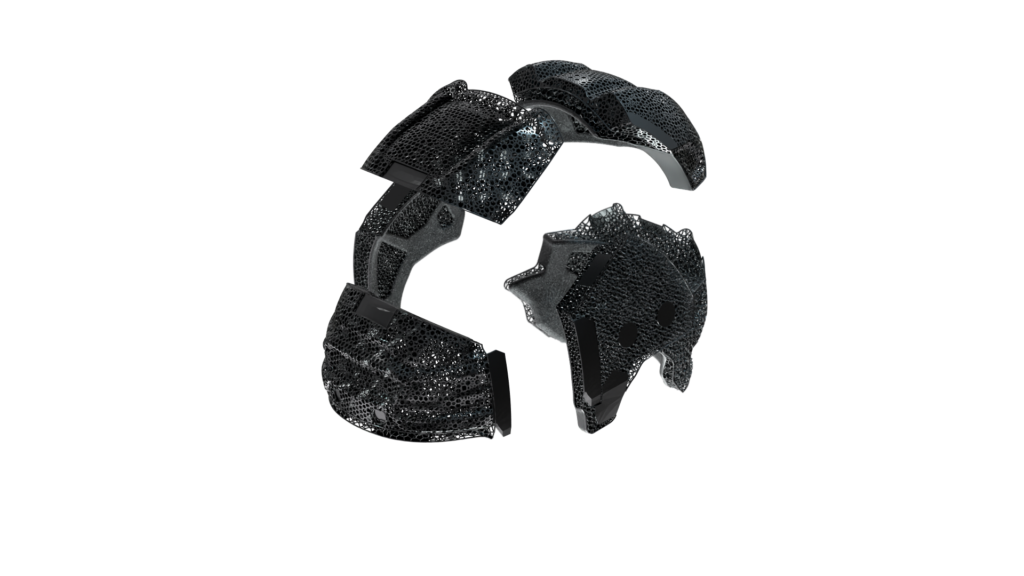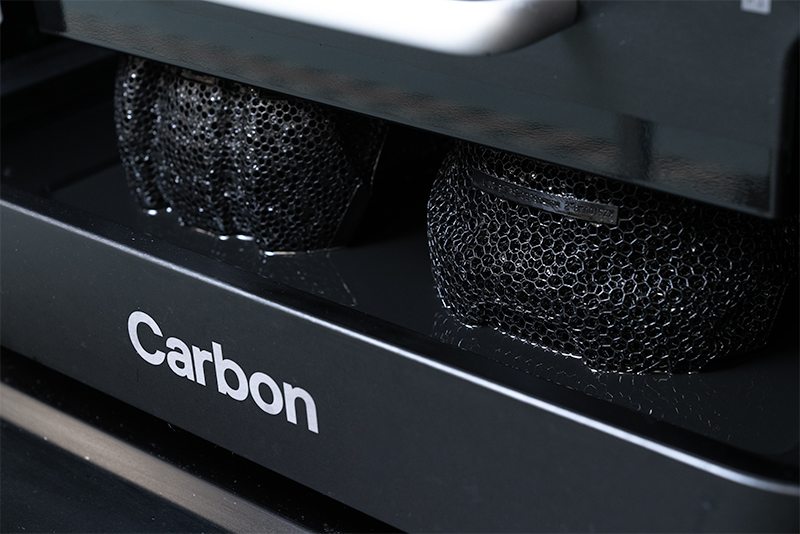CCM, one of Canada’s leading hockey equipment manufacturers, in partnership with Carbon, has just introduced its ‘SuperTacks X with Nest Tech’ helmet ahead of the NHL 2021 season. The 3D printed helmet will be made available for the first time to all professional hockey players, having been certified for professional use by the National Hockey League (NHL).
The interior of the helmet is 3D printed using Carbon’s Digital Light Synthesis (DLS), similar to the Riddell football helmet, and uses Next Evolution of Sense Technology (NEST) to provide improved protection, performance, thermoregulation, and comfort. Instead of the traditional foam padding used in helmets up to now, Carbon’s innovative lattice technology, programmable resins, and software platform enable designers and product engineers to develop precise, tailored lattice geometries that provide specific desired mechanical responses customized for each player or position.
Carbon had previously used its lattice technology in developing next-generation sneakers in partnership with Adidas. Yet, unlike with protective equipment, the focus in shoes was on energy return. In contrast, the geometrical design of helmets is focused on on energy dampening to absorb the force of damaging impacts.
In a previous partnership to develop customized and individualized protective helmets for NFL players, Carbon partnered with Riddell, a leading football helmet manufacturer with a proprietary database of five million impacts captured by its smart helmet technology. Using Carbon’s DLS prototyping-to-production platform to develop the helmet liners, the two companies collaborated to build the Diamond helmet product platform for Riddell, and the SpeedFlex Precision Diamond helmet specifically available to NFL players since 2018.
This is one among several partnerships Carbon has entered into to develop specialized, scalable applications for its DLS technology. It has already partnered with notable companies such as Adidas, Ford, Ikea, Johnson & Johnson, and worked last year with Lamborghini to produce components for the Urus SUV model and the Sian FKP 37 hybrid sports car.
This partnership is Carbon’s second in protective helmets, in this case for hockey. The desired mechanical response, as well as the impacts, in football vary from those in hockey. They also vary from position to position, from a linebacker to a quarterback in football, from a forward to a goalie in hockey. With Carbon’s lattice generation and simulation Design Engine, it is possible to input the required user-defined mechanical response, and develop a multi-functional lattice pattern optimized (using the same base elastomer materials) at the unit cell type, shape and strut level, and to each player or position..
In an interview with 3DPrint.com , Hardik Kabaria, software engineer for computational geometry at Carbon pointed out, “Everywhere foam exists, lattice can go. It’s an infinitely tuneable technology with many applications in the protective equipment space. With a wide range of programmable base materials, different types of foam with different gradients can be designed to produce the desired mechanical response. With such a lattice design ‘tool kit’, it is possible to smoothly transition between material properties (impossible to do with traditional methods), optimize lattice parameters for specific mechanical properties and use cases.“
With the Riddell helmet, Carbon could benefit from over 5 million data points proprietary to Riddell in studying and capturing football impacts to develop a custom lattice with over 140,000 struts optimized for linear and rotational forces. This was learning that Carbon was able to leverage to improve and apply their software platform to further benefit product development with CCM. The company was able to leverage similar mechanical response and impact data for hockey players from CCM, which has a history in manufacturing sports equipment of over a century.
“The Super Tacks X with NEST Tech liner is produced using Carbon® Design Engine software, which automatically generates an optimized lattice structure based on desired performance criteria and weight,” Carbon stated. “This lattice structure facilitates the absorption and dissipation of energy by aligning internal damping struts against the directions of impact that hockey players experience during play. With over 130,000 individual struts, the lattice is built so each strut is specially tuned at every point on the helmet. Increases or decreases in the stiffness of the lattice structure are enabled through precise adjustments to the thickness of each strut, allowing the lattice to absorb and disperse energy from various impacts.”
CCM’s partnership with Carbon began in early 2019, when the sports equipment manufacturer (who had already been working with 3D scanning technologies) purchased the M2 3D printer for research and development, and to evaluate product market fit using Carbon’s technologies. Through a product workshop, the two companies aligned on developing this helmet for professional hockey players.
“Super Tacks X with NEST Tech is a revolutionary helmet liner technology, bringing unmatched breathability, superior fit, improved comfort, and elite level protection for our athletes,” says Jeff Dalzell, vice president of Product Creation at CCM Hockey. “We’re thrilled to be working collaboratively with Carbon to bring never-before-seen innovation to the hockey industry with this new helmet.”
It is an exciting step for Carbon to enable companies such as CCM in developing custom fit products that were not possible before, and provide new levels of performance in terms of protection, energy absorption, stress distribution, energy recovery, comfort, safety and customizability. It could also provide CCM’s R&D and product development teams with an edge over competition in the sports equipment industry.
“At Carbon, we are laser focused on enabling customers to bring innovative products to market that push industries forward,” said Carbon CEO Ellen Kullman. “We’re excited to partner with CCM Hockey, a leading manufacturer in hockey equipment for over a century, to produce a revolutionary hockey helmet that will change the game.”
The helmets were already being tested in the 2020 NHL season, with two players from the Toronto Maple Leafs, Austin Mathews and John Tavares, and one player from Columbus Blue Jackers, Seth Jones. The helmet has received hockey equipment certifications—CSA, HECC and CE—and will be available to all NHL players ahead of the 2021 season. A retail helmet for consumers, using the same advanced technology, will be released in the spring of 2021.
For some, the advantages are felt immediately on wearing the helmet.
Jim Sauerbaum in conversation with 3DPrint.com, Strategic Business Developer in Performance & Protection at Carbon, and former hockey player, said on wearing it, “I was immediately blown away by the feeling compared to a traditional helmet, which usually creates an insulating effect. With this [3D printed helmet], you get an incredible breathing feeling. You have a cooling effect while playing. I imagine it contributing significantly to improved athletic performance and comfort.”
And it probably does. A study from 2017 indicates that thermoregulation is critical to improved athletic performance, with just seven minutes of intermittent head cooling sufficient to positively affect aerobic performance.
While it is difficult yet to say if or how much of the difference will be made by the new helmet, Columbus’ sSeth Jones was wearing the helmet during a first-round playoff game against Tampa Bay that went into five overtimes. By skating for 65 minutes and six seconds, he set an NHL playoff record for most minutes played in a single game. Helmets off to that!
Subscribe to Our Email Newsletter
Stay up-to-date on all the latest news from the 3D printing industry and receive information and offers from third party vendors.
You May Also Like
Further Understanding of 3D Printing Design at ADDITIV Design World
ADDITIV is back once again! This time, the virtual platform for additive manufacturing will be holding the first-ever edition of ADDITIV Design World on May 23rd from 9:00 AM –...
3D Printer Maker EVO-tech Reborn as NEVO3D — Once More With Feeling
EVO-tech was a 3D printing service and original equipment manufacturer established in 2013 and based in Schörfling am Attersee, Austria. The company produced high-quality material extrusion systems featuring linear bearings,...
3D Systems Brings 3D Printed PEEK Cranial Implant to the U.S. with FDA Clearance
For more than 10 years, 3D Systems (NYSE:DDD) has worked hand-in-hand with surgeons to plan over 150,000 patient-specific cases, and develop more than two million instruments and implants from its...
CDFAM Returns to Berlin for Second Annual Symposium
The second CDFAM Computational Design Symposium is scheduled for May 7-8, 2024, in Berlin, and will convene leading experts in computational design across all scales. Building upon the first event...


